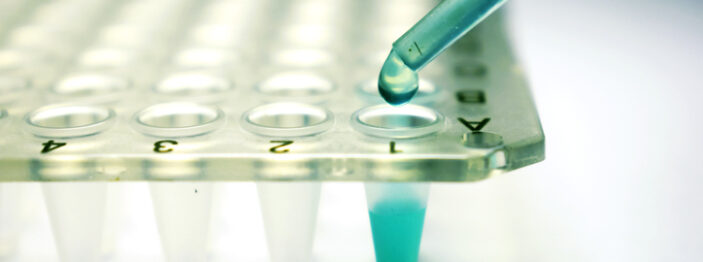Stem-cell transplantation: is it a cure for MS?
Part 1
Stem-cell therapy is the most aggressive treatment available for multiple sclerosis and is becoming increasingly accepted as a possible therapy for people with severe MS. While more effective than conventional medications, it faces the same limitation: it does not target the underlying disease process. So it is in important option – but is not a cure.
Stem cells are undifferentiated cells, which means they have not committed to becoming a specific type of cell (e.g. a skin cell, a nerve cell, etc.). Within this category are hematopoietic (‘blood-forming’) stem cells (HSC), which mostly live in the bone marrow and have the potential to develop into any type of blood cell, including immune cells.
In MS, the underlying problem is presumed to be an abnormal autoimmune response that causes immune cells to attack vulnerable tissues in the brain and spinal cord. So the idea behind a transplant is to eliminate the diseased immune system and rebuild it from scratch. An immune reset is done by transplanting back the person’s own HSCs. This is called ‘autologous’ transplantation (from oneself rather than from a donor); since it comes from the person’s own body, there is not a problem with tissue rejection. All of this leads to the lengthy abbreviation: aHSCT, for autologous hematopoietic stem cell transplantation.
aHSCT is a multi-step process (Atkins & Freedman. Neurotherapeutics 2013;10:68-76). The first step is to obtain the stem cells. These can be taken directly out of the bone marrow with a needle. But the more common procedure is to obtain them from a blood sample. Since most stem cells reside in bone marrow, a drug (such as G-CSF) is used to ‘mobilize’ the stem cells so they leave the bone marrow and enter the bloodstream. Mobilizing drugs can trigger an MS relapse, so a course of steroids and an immunosuppressant are commonly added. Only 5% of the cells collected will be stem cells, so the sample is usually treated in the test tube to reduce the number of immune cells that are present; the concern is that these immune cells may re-start MS once they are introduced back into the body. This process of mobilization and collection takes about 4-10 days. Once all of this has been done, the purified stem cells are frozen in liquid nitrogen until they are ready to be used.
The next step is to eliminate the person’s existing immune system, which is done with a ‘conditioning’ regimen consisting of a series of chemotherapy drugs that kill off immune cells. (Total body irradiation will also work but this is generally not used in MS.) One of the more common regimens is called BEAM-ATG (the four chemotherapy drugs, BiCNU [aka carmustine], Etoposide, ara-C [cytarabine arabinoside] and melphalan in combination with anti-thymocyte globulin, an antibody that specifically targets immune cells). BEAM-ATG is considered to be an intermediate-intensity conditioning regimen, which means it knocks out much (but not all) of the person’s immune system.
Once the conditioning regimen has been completed (which takes 1-2 weeks), the stem-cell graft is thawed and infused back into the person’s body. The HSCs migrate to the bone marrow and begin to proliferate, which will ultimately repopulate the entire immune system.
As you might expect, knocking out the immune system increases a person’s risk of infections. So people typically get a whole suite of medications – antibiotics, antivirals, antifungals – to prevent infections. Other drugs for nausea, diarrhea and pain are often needed, as well as blood transfusions and nutritional supplements. Since people with MS often need a catheter to help empty the bladder, antibiotics are needed to prevent urinary tract infections.
It’s a gruelling procedure. People often feel worse in the first two weeks after transplant as the immune system regrows. A common early side effect is fever, which can make MS symptoms feel worse. Cognition can also suffer from the wear and tear on the body.
The whole process of aHSCT may take 3-6 months to recover from. Is it worth it? We will look at how effective this treatment is in Part 2.
Share this article
Facebook Twitter pin it! Email
Related Posts
Back





